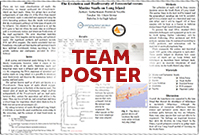

- Program:
- Barcode Long Island
- Year:
- 2022-23
- Research Topic:
- Wildlife & health
- Taxonomic Group Studied:
- Animals: Invertebrate
Project:
Utilizing Linear Regression and Geographic Information Systems Modeling to Determine the Impact of Landscape Variables on Mosqui
- Students:
- William Bertolotti, Noah Garcia, Sabrina Johnson
- School:
- Plainedge High School, Nassau
- Mentors:
- William Bertolotti
Abstract:
New York regional temperatures have increased by 1.1oC, expanding the geographic distribution of mosquito populations (Bajwa, 2018; Yang et al., 2020). Aedes albopictus and Aedes aegypti are known to carry West Nile Virus and Malaria. To prevent the establishment of disease-carrying species in New York, factors related to prevalence must be identified. Lee et al. (2022) and Chen et al. (2019) used regression-based models to analyze the impact of landscape attributes. Young et al. (2021) identified landscape heterogeneity as a predictive factor. Adapting these methodologies, this study proposes linear regression modeling to differentiate genera, and shapely additive explanation (SHAP) to evaluate the environmental variables that promote mosquito abundance. Following the methods of Li et al. (2020) and Morelli et al. (2022), environmental variables will be measured using the Shannon Equitability Index. This project will consolidate the data using an ArcGIS-based land cover model.

